Are mankind and marijuana biological evolutionary partners that cannot be parted without significant consequences? A complex symbiotic relationship appears to exist between man and cannabis, and we see this connection in our physiochemical makeup, our cultural consciousness and memory, our incessant at-all-costs demand for the plant, and as recorded throughout human history. Ultimately, we are who we are today in large part because of our long relationship with the cannabis plant. This article examines the evidence supporting the co-evolution theory and discusses its importance and uncanny timeliness given the current worldwide marijuana legalization movement.
In order to prove the case for coevolution we must prove that the cannabis plant and man exerted influence over each other in ways that triggered and sustained biological evolutionary changes that can be substantiated in some way. Considering that evolution generally improves a species, we must first examine the individual benefits that both man and marijuana realized as a result of their coevolution and be able to quantify those benefits today. We must also prove at least two other major points as detailed below.
What is Co-Evolution?
In simple terms, coevolution refers to inter-species influences that affect the evolution of both species. For instance, consider the coevolution of lichens. You may not know that lichens are actually two species in one; a fungus and a type of algae; each of which fills a specific function that the other requires to prosper. (1)
The relationship between many insects and flowering plants is also co-evolutionary. Butterflies, moths, bees and other insects have evolved together with the types of plants that they pollinate. (2) Flowers and plants receive the vital benefit of a pollinator and in some cases the services of an aggressive defender, while the pollinator generally receives nourishment as its main benefit from the relationship.
In order for co-evolution to work, both species must benefit in a crucial way. In fact, it may be necessary to take this qualification one step further and argue that in order for coevolution to have truly existed between any two species, one or both species will suffer negative consequences should the other’s influence be radically altered or suddenly cease.
Additionally, coevolution often results in physical changes that would not have otherwise evolved had the partner species not existed. Bee, insect and bird species have developed specific weights, tongue sizes and textures, coloring/markings and more in order to properly interact with and maximize the benefits received from their co-evolutionary partners. Flowers and plants, on the other hand, develop specific tube lengths, textures, types of pollen or nectar, coloring and other physical features that attract the pollinators they co-evolve with. (2)
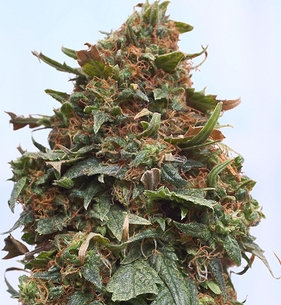 Did Man and Marijuana Co-Evolve? Building the Case
Did Man and Marijuana Co-Evolve? Building the Case
Based on what we can readily observe in nature and upon elementary principles of evolution, we can see that there are three primary qualifications required to determine if man and cannabis co-evolved:
1.) Substantial Benefit
a. Did humans receive a direct, substantial benefit from their relationship with the cannabis plant?
b. Did the cannabis plant receive a direct, substantial benefit from its relationship with humans?
2.) Physiological/Biological Adaptation Present
a. Did the relationship between man and marijuana cause biological adaptations in humans?
b. Did the relationship between man and marijuana cause biological adaptations in cannabis?
3.) Co-Dependence of Co-Evolutionary Partners
a. Will one or both species suffer negative consequences if the co-evolutionary relationship is terminated or radically altered?
Using these criteria, it becomes apparent that in the case of flowers and pollinators, the substantial benefit is food for the pollinator and pollination for the flower. The adaptations are species-dependent but usually come in the form of specialized coloring, texture and tube length for flowers, and specialized tongue length and coloration, for instance, in the pollinator.
Applying the third principle is theoretical but sound. Remove the pollinator, and the plant’s numbers will quickly decline, possibly to the point of extinction. Remove the flower, and the pollinator will lose a primary food source and suffer a similar decline. These principles of coevolution are obvious in the plight of the modern honey bee, whose numbers are drastically declining, with many scientists deeming this a world-changing (for the worse) event. (3)
The critical test then, is to apply these 3 conditions to man and cannabis.
Getting the Timeline Right
Evolution of species generally takes place over thousands or millions of years, and there is evidence to suggest that there has been sufficient passage of time to allow for co-evolution between humans and cannabis. For instance, archaeological finds in Taiwan include pottery shards that are embedded with decorative strips of hemp cord. (4) These finds date to around 10,000 years ago, but logical speculation tells us that humans must have been working with hemp long before this.
In order for these peoples of 10,000 years ago to possess hemp cord, they must first have mastered working with hemp fiber. In order to do this, they must have been capable of raising hemp crops of sufficient quality and quantity. After all, if hemp cord were a rare material, it likely would not have been used to adorn a clay pot.
Cultivation of cannabis and the development of useful hemp fiber and cord almost certainly took place over thousands of years. Therefore it’s fairly logical to argue that in the early Indo-China region of the world at least, hemp materials were being manufactured and used by humans deep into the Stone Age.
In addition to evidence from the Stone Age, we also see clear indications of man’s strong connection to cannabis in a number of historical records and archaeological finds. Consider that researchers have found traces of cannabis (namely, hashish) in the skin, hair and tissues of Egyptian mummies that died 3,000 years ago. (5) We can also speculate on the 2 pounds of buds found in an ancient Chinese tomb that dates back 2,500 years. (6)
We know that many ancient peoples buried their dead with the things they would need in the afterlife, so what the Chinese tomb above tells us is that marijuana was considered a vital item in both life and death. It was a staple item of ancient life, so we know that even thousands of years ago, humans were intrinsically connected to marijuana.
So with an adequate timeline for coevolution established, we must now set the stage to prove that the level of interaction between cannabis and man were sufficient enough to produce the survival benefits, biological/physiochemical changes and codependency associated with a true case of coevolution.
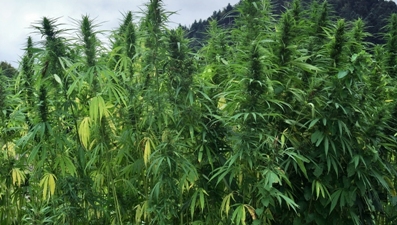
Item 1A: Benefits Realized by Humans
The cannabis plant has probably been the single most valuable natural resource for humans other than water and basic food items. This was true for most of our history and didn’t change much until about 80 years ago. It would be difficult to argue that any one resource has provided more important and consistent benefits than the cannabis plant. The depth of our relationship with marijuana can be seen in the critical life-sustaining resources it has provided mankind:
Nourishment
The cannabis seed is considered by some to be one of the most nutritionally complete food sources in the world, and one that is particularly suited to humans. (7) In fact, some experts believe that hemp nut – what remains after cannabis seeds have been shelled – is the only food source in existence that can sustain human life even in the absence of all other food sources. (8)
Cannabis seed also makes an excellent animal feed and has been processed and fed to domesticated animals for thousands of years. (9) This has allowed man to diversify his nutritional resources; a fundamental aspect of long-term survival.
Fiber Materials
Hemp fiber is widely regarded as one of the strongest natural fibers, and was likely the first plant humans farmed for fiber materials. (10) Clothing has been made from hemp for at least the last 10,000 years (10), and considering that humans are not fit for survival without some type of coverings, this was a crucial part of our success as a species.
Hemp fiber was used to make the sails of many ancient seafaring peoples, leading to the interbreeding of populations, the diversification of human genetic stock, and the birth and continuation of culture.
Hemp paper, which came into use more than 2,000 years ago in ancient China (11), gave us the ability to record history and communicate with and educate each other, leading to the eventual development of the technologies and civil norms that we know today.
Oils
When most people think of hemp, cannabis or marijuana oils, they generally think strictly in medicinal or therapeutic terms. However, these oils have been used to make many products that are essential to human society such as soaps, paints, cosmetics, (12) etc. But perhaps even more importantly, hemp oil is said to burn brighter than any other type of oil in an oil lamp – a tool of critical importance for thousands of years. (13)
Medicine
Most modern accounts place the first recorded uses of cannabis as medicine squarely in the pages of a book supposedly written by Chinese Emperor Shen Nung. Long standing myth holds that Nung wrote the infamous herbal medicine book “The Herbal” around 4,100 years ago, mentioning cannabis as a potent cure for a number of different ailments. However, the earliest copies of this text date to only 2,000 years ago (14), making the exact origins of the use of medical cannabis difficult to pinpoint.
Fortunately, the timeline laid down by the myths surrounding Shen Nung appear to be corroborated by ancient peoples from Iran and India, who used the mysterious drug “soma” for a wide variety of medical and therapeutic (as well as recreational and spiritual) purposes around the same time – about 4,000 years ago. (15) Although it’s not known for certain at this time, many researchers believe that the ancient descriptions of the properties of soma describe none other than the cannabis plant. (16)
When we take into account the 2 pounds of pot found in the 2700 year-old Chinese tomb mentioned earlier, it becomes more apparent that humans have likely been using cannabis for important medical and therapeutic functions for at least 3,000 – 4,000 years. However, it’s reasonable to argue that medical use of the cannabis plant occurred much earlier. After all, we’re basing current estimates on the earliest surviving written records of cannabis, and the dismaying part of all of this is that written records generally do not stand the test of time well.
Therefore it’s logical to suggest that there are earlier accounts of the medical use of cannabis that have been lost to time and the elements. More importantly, the earliest texts we do have regarding medicinal cannabis are special simply because they are the earliest records that we have of the matter. But if we take the existence of these records and archaeological finds at face value, we can easily date the therapeutic use of marijuana back much farther than 3,000 – 4,000 years because those texts would almost certainly have been written long after the use of cannabis as medicine was already in place.
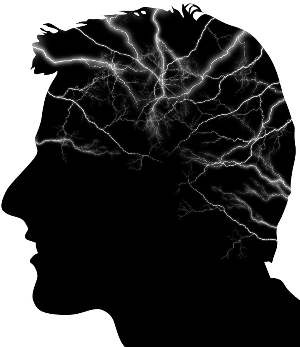 Spiritual Exploration & Higher Thinking
Spiritual Exploration & Higher Thinking
Stone Age humans may have gotten high for the first time while processing cannabis for fiber more than 10,000 years ago. Considering that we know humans were making clothing from hemp at that time (10), it’s easy to imagine a situation where a society that often gathered around fires would eventually become intoxicated when hemp materials were inevitably burned. Of course, this is just speculation but is logical considering the peripheral evidence.
The point is that at some time thousands of years ago, humans began to get high from marijuana. We don’t need scientific research to tell us that this would have undoubtedly led to spiritual searching and higher thinking; a key component of the marijuana “high.” This is vital to consider because spirituality is a fundamental part of human nature and has evolved as an inseparable part of who we are.
Higher thinking facilitated by ingestion of marijuana could have been the catalyst that brought us out of the Stone Age. What we know for certain is that many groups have used cannabis religiously over the last few thousand years, and these religions have been among the primary forces that have shaped our current societies; for better or worse.
In fact, some have theorized that cannabis was heavily in use during biblical times by figures that would become pivotal in the formation of Christianity. In his groundbreaking article for High Times titled Christians and Pot: A High Holy History, Chris Bennett explains how etymological research has led to evidence suggesting that Jesus Christ and his disciples were using potent medical-grade cannabis oils as the primary sacrament of their small but growing spiritual movement. (17)
Although our primary task is to prove or disprove the theory that man and marijuana co-evolved, one task that we don’t need to prove is the impact of religion on humanity. There’s no doubt that we have evolved as creatures that crave some type of spiritual fulfillment, and this evolution seems likely to have been heavily influenced by marijuana (and undoubtedly other drugs).

Item 1B: Benefits Realized by Cannabis
Like most organic materials, cannabis degrades quickly and at this time few fossils of the cannabis plant have been discovered, leading experts to claim that cannabis is no more than 34 million years old. (18) Little is known about its evolution until the point of contact with humanity, but after humans took up interest in the plant, the course of evolution for cannabis was clearly impacted, and seemingly for the better.
Proliferation
Marijuana is widely theorized to have originated in Asia, and most scholars agree that its proliferation around the world was in large part due to humans. Because our early ancestors relied so heavily on the plant for a variety of functions, cannabis seeds were spread wide and far everywhere that man traveled. For a plant that is relatively young from an evolutionary standpoint, its proliferation around the globe is impressive and assured the plant’s continued survival.
Protection
An important and sometimes solitary crop, cannabis has enjoyed the protection of man for millennia. The very act of cultivation assured that the plant would be looked after, protected and re-sown by hand each year. Even though cannabis probably would have performed well enough through proliferation by birds and other mammals that eat the seeds, humans hastened the proliferation of marijuana by offering it protection that few if any other plants had available in the last 10,000 – 12,000 years.
Specific Cultivation
Humans have been manipulating the cannabis plant for thousands of years. This is easily seen in the wide variety of cannabis strains in existence today. Some are long and thin and are designed specifically for fiber, some are fat and bushy and designed for maximum therapeutic value, and some are heavy with seeds for seed stocks. This manipulation and cultivation for specific purposes has led to a significant increase in genetic diversity of cannabis and its ability to survive and thrive in a wide range of environments and conditions.
Item 2A: Biological Adaptations in Man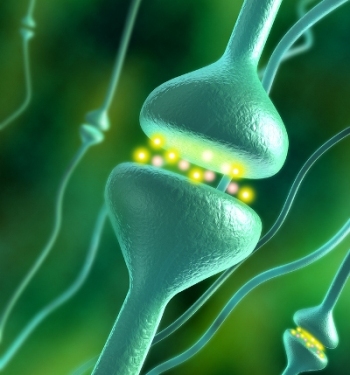
Endocannabinoid Systems
The endocannabinoid system is found at nearly all points in the human body and is thought to be the most important system for regulating healthy human functioning. (19) While this vital system evolved in humans long before the cannabis plant existed (20), we can logically conclude that the endocannabinoid system has been impacted by man’s long term use of marijuana, which causes cannabinoids to interact with receptor sites in ways that wouldn’t otherwise have occurred.
Meaning, the level at which cannabis has interacted with the endocannabinoid system cannot be duplicated by any other means. Of course, this is theory – we do not know precisely what the endocannabinoid system looked like thousands of years ago, or even a couple of centuries ago because until recently we didn’t know this system existed.
What we do know is that consistent use of any substance such as marijuana causes changes in gene expression (21), which are then passed to our offspring. And considering that these changes are occurring in the most important physiological system in the human body, it’s safe to argue that man’s consistent use of marijuana has caused biological adaptations the measure of which may never be known.
Altered-State Seeking
Because of the great lengths that man has proven he will go to in order to achieve altered states of consciousness, we must wonder if his historic use of marijuana has actually created this drive or been caused by it natively. What is certain is that marijuana has played a central role in altered-state seeking as evidenced by mankind’s pursuit of its euphoric high despite drastic, sometimes life-changing consequences. To theorize that this has been caused by a residual effect of cultural marijuana use and dependence is not far-fetched considering that consistent use of the drug causes changes in gene expression as noted previously. (21)
We have evolved as a species that seeks out alternate mental and psychological states, and cannabis has featured prominently in this evolution. Although we know that other animals also seek out altered states of consciousness (22), man and his special relationship with cannabis seems to have specifically evolved to gravitate toward marijuana. The proof of this is easily found by reviewing our history and current events regarding this plant.
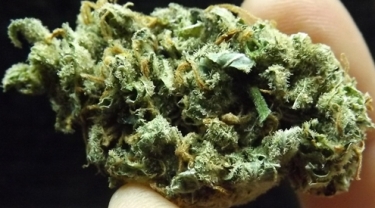 Item 2B: Biological Adaptations in Cannabis
Item 2B: Biological Adaptations in Cannabis
Basic knowledge of botany is all that is needed to understand how deeply the evolution of cannabis has been affected by the evolution of man. By cultivating the plant over thousands of years for specific purposes, we effectively forced the rapid evolution of hemp.
While some might call this an unnatural evolution, the fact of the matter is that we are natural beings operating in our natural environment. Evolution is still evolution even if it has been hastened by an intelligent species.
Specifically, the biological adaptations that occurred in the cannabis plant directly related to mankind’s influence over it are:
Improved Hardiness
Cultivation and selection processes led to cannabis varieties that are more capable of withstanding harsh environments and conditions.
Increased Potency
Cultivation and selection processes led to cannabis varieties that produce a larger amount of female flowers that are higher in psychoactive properties.
Increased Fiber Strength
Cultivation and selection processes led to cannabis varieties that produce stronger and longer fibers.
While some plants might have developed increased hardiness without interacting with man, all of the biological adaptations above – especially changes related to fiber and flowers – were caused by man and would almost certainly not have developed were it not for our direct influence.
Item 3: Existence of Verifiable Co-Dependence
The existence of a verifiable co-dependence between man and marijuana is where theories of co-evolution falter and begin to resemble something akin to evolutionary cohabitation. Would marijuana have survived without any interactions with man? Almost certainly.
Would man have survived and thrived without interactions with marijuana? Probably. We likely would have used other materials for our ropes and fabric, and other herbs and plants would have supplied most of the medicines we needed and the substances necessary for altered-state seeking.
Could marijuana be removed from the earth today and man still survive largely unscathed? Yes. Could man be removed and marijuana survive unscathed? Absolutely.
The knowledge that we have cannabinoid receptors in our bodies and that the endocannabinoid system is so critical often leads people to conclude that we’re “meant” to use cannabis. But the fact of the matter is that these systems evolved long before the cannabis plant existed. Additionally, we also have vast distributions of opioid receptor sites in our body, but does this mean that we are “meant” to smoke opium?
Of course not.
The truth is that as much as we love our marijuana, we are not co-dependent upon it except by choice.
Conclusion
To say that we have co-evolved with cannabis is accurate, but the degree of this co-evolution remains in question. Can we do without cannabis and honor prohibition? Yes. But with all of the benefits that this plant offers, why would we?
Man and Mary Jane will continue to co-evolve long into our future, and perhaps indefinitely. We require food, water, nutrients like metals and minerals, oxygen, sex, shelter, knowledge, and more in order to survive and prosper. Is it so hard to believe that there are other substances out there that provide critical functions when consumed? Isn’t it possible that marijuana fills an important homeostasis function to balance out all of these things in life?
Even if marijuana doesn’t fill this function or isn’t needed in order for it to be filled, it’s still relatively harmless. It brings people together and facilitates the communication and higher thinking that will be required to raise humanity up to the next level. So let our history remind you that the next time you ingest cannabis, you’ll be actively co-evolving humanity with the plant that has made so many of our successes possible, and you’ll be part of the world’s longest marriage between Man and Mary Jane.
References:
(1) Carmen Ascaso, Jacek Wierzchos Study of lichens with different state of hydration by the combination of low temperature scanning electron and confocal laser scanning microscopies INTERNATL MICROBIOL (1999) 2:251–257 15 July 1999 http://revistes.iec.cat/index.php/IM/article/viewFile/4c457c06dc5b8.002/9221
(2) A. Ross Kiester, Russell Lande, Douglas W. Schemske Models of Coevolution and Speciation in Plants and their Pollinators Department of Biology, Tulane University, New Orleans, LA Department of Biophysics and Theoretical Biology, University of Chicago, IL Department of Biology, University of Chicago, IL The American Naturalist > Vol. 124, No. 2, Aug., 1984 http://www.jstor.org/discover/10.2307/2461492?uid=3737952&uid=2&uid=4&sid=21102910602711
(3) Grossman, Elizabeth Declining Bee Populations Pose a Threat to Global Agriculture April 30, 2013 Yale Environment 360 http://e360.yale.edu/feature/declining_bee_populations_pose_a_threat_to_global_agriculture/2645/
(4) Marijuana – The First Twelve Thousand Years Schaffer Library of Drug Policy http://druglibrary.org/schaffer/hemp/history/first12000/1.htm
(5) S. Balabanova, S. Parsche, W. Pirsig First identification of drugs in Egyptian mummies Natur wissenschaften August 1992, Volume 79, Issue 8, p 358 1992-08-01 http://link.springer.com/article/10.1007/BF01140178
(6) Hong-En Jianga, Xiao Li, You-Xing Zhao, David K. Ferguson, Francis Hueber, Subir Bera, Yu-Fei Wang, Liang-Cheng Zhao, Chang-Jiang Liu, Cheng-Sen Li A new insight into Cannabis sativa (Cannabaceae) utilization from 2500-year-old Yanghai Tombs, Xinjiang, China Journal of Ethnopharmacology Volume 108, Issue 3, 6 December 2006, Pages 414–422
http://www.sciencedirect.com/science/article/pii/S0378874106002935
(7) Osburn, Lynn HEMP SEED: THE MOST NUTRITIONALLY COMPLETE FOOD SOURCE IN THE WORLD Hemp Line Journal, July-August 1992, pp. 14-15, Vol. I No. 1 http://www.ratical.org/renewables/hempseed1.html
(8) Briggs, Jeremy Hemp: A Complete Food Hemphasis.net http://www.hemphasis.net/Nutrition/nutrition.htm
(9) J.C. Callaway Hempseed as a nutritional resource: An overview Department of Pharmaceutical Chemistry, University of Kuopio, FIN-70211 Kuopio, Finland; Euphytica 140: 65–72, 2004 http://www.finola.com/Hempseed%20Nutrition.pdf
(10) The People’s History The Thistle Massachusetts Institute of Technology Volume 13 Number 2: Sept./Oct., 2000 http://www.mit.edu/~thistle/v13/2/history.html
(11) Van Roekel, G J, 1994. Hemp Pulp and Paper Production. Journal of the International Hemp Association 1: 12-14. http://www.druglibrary.org/olsen/hemp/IHA/iha01105.html
(12) A-Z Hemp Major Uses of Industrial Hemp Arizona Industrial Hemp Council http://www.azhemp.org/Archive/Package/Uses/uses.html
(13) Hemp as a Natural Alternative History of Hemp http://www.harbay.net/history.html
(14) Medical Cannabis A Short Graphical History – China AntiqueCannabisBook.com
http://antiquecannabisbook.com/chap2B/China/Pen-Tsao.htm
(15) Watson, Pamela Drugs as Assistants in Economic, Social and Religious Needs http://prehistoricdrugs.wordpress.com/2012/07/08/drugs-as-economic-sociocultural-political-tools/
(16) Hager, Steven The Big Bhang Monday June 1, 2009 Cannabis Culture Magazine
http://www.cannabisculture.com/content/big-bhang
(17) Bennett, Chris Christians and Pot: A High Holy History High Times Magazine October 18, 2007 http://www.hightimes.com/read/christians-pot-high-holy-history
(18) Guy, Geoffrey; Whittle, Brian; Robson, Philip The Medicinal Uses of Cannabis and Cannabinoids Pg. 73, 74 First Edition Pharmaceutical Press
(19) Dustin Sulak, DO Maine Integrative Healthcare Introduction to the Endocannabinoid System NORML http://norml.org/library/item/introduction-to-the-endocannabinoid-system
(20) John M. McPartland, DO The Endocannabinoid System: An Osteopathic Perspective Department of Osteopathic Manipulative Medicine at Michigan State University College of Osteopathic Medicine in East Lansing The Journal of the American Osetopathic Association October 1, 2008 vol. 108 no. 10 586-600 http://www.jaoa.org/content/108/10/586.long
(21) Rhodes JS, Crabbe JC. Gene expression induced by drugs of abuse. Curr Opin Pharmacol. 2005 Feb;5(1):26-33. National Center for Biotechnology Information http://www.ncbi.nlm.nih.gov/pubmed/15661622
(22) Ronald K. Siegel, Ph.D Intoxication: The Universal Drive for Mind-Altering Substances Chapter: Falling Birds and Flying Cats 03/29/2005
- Barcelona Cannabis Club Review: Green Age - March 23, 2022
- Things to do after Smoking Weed in Barcelona - March 2, 2022
- 9 Things You Need to Know about Cannabis Clubs in Madrid - February 15, 2022

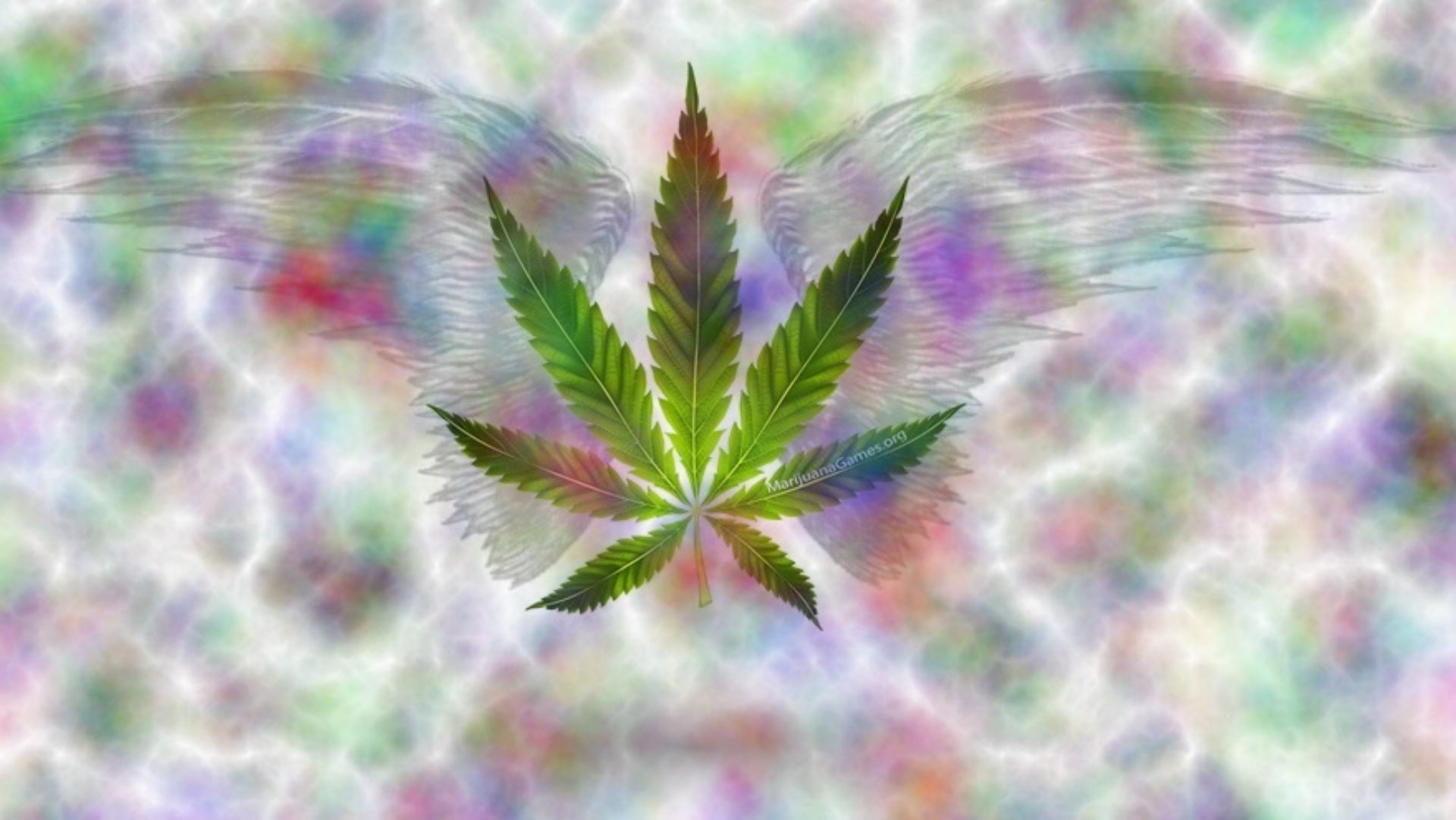
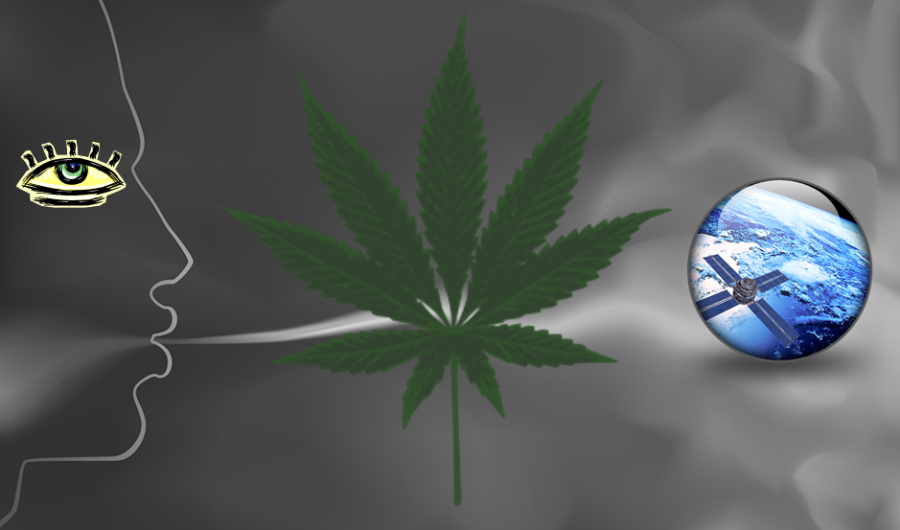
2 thoughts on “The Co-Evolution of Man and Mary Jane”